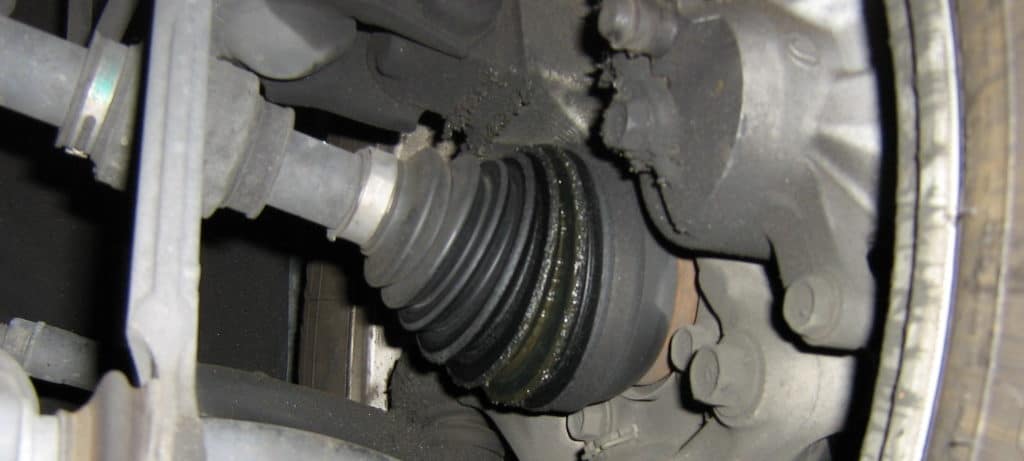
All about CV boot replacement
Wondering what happens to your car when the CV boot is replaced? Looking for an overview or tutorial because you’re considering doing a CV boot repair yourself? This may be the page you’re looking for.

WHAT IS A CV BOOT?
Let’s start with the basics. A CV boot is a flexible rubber boot which protects the CV joint. What’s a CV joint? It’s a flexible joint found on both ends of the drive axle. The outer joint allows the front wheels to turn and move up and down. The inner joint allows the suspension to move and the axle to telescope in and out. The CV joints are packed with grease. The CV boots protect the joints. They keep the dirt and grit out and the grease in.
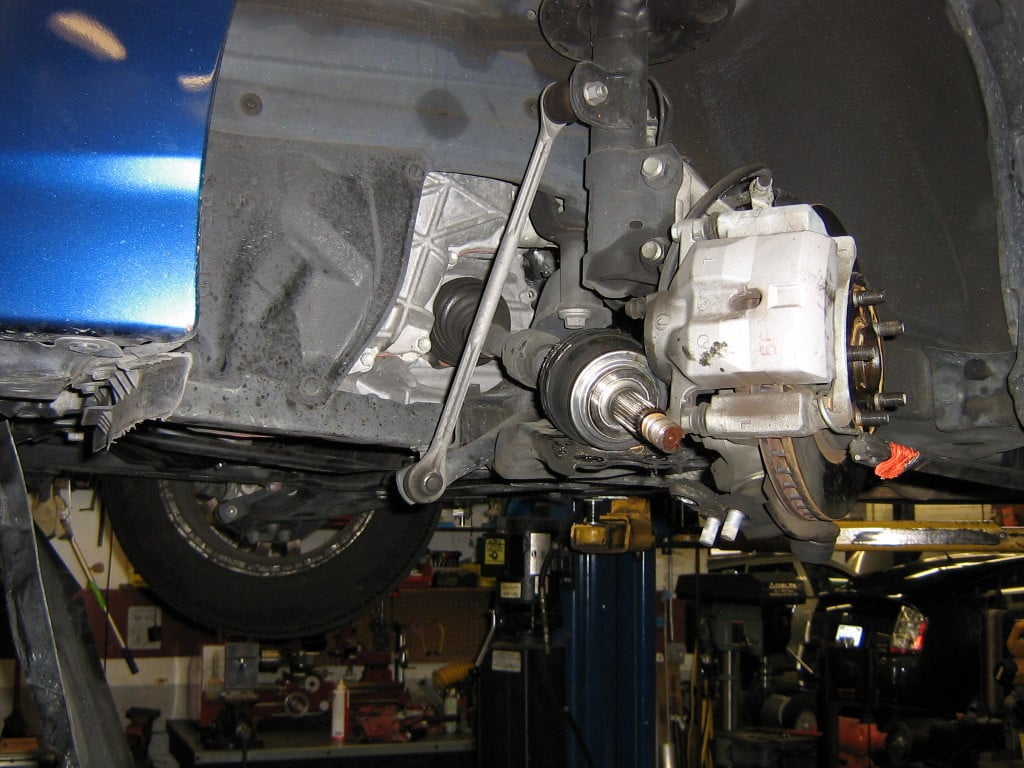
Removing the axle from the car
The first step is to remove the axle from the car. The axle nut will usually be staked in place as a safety measure. It’s best to de-stake the axle nut before removing it. Some axle nuts are so beefy that they’ll tear up the threads on the way off. KTC (the Japanese equivalent to Snap-On) makes a great de-staking tool that makes the job a lot easier.
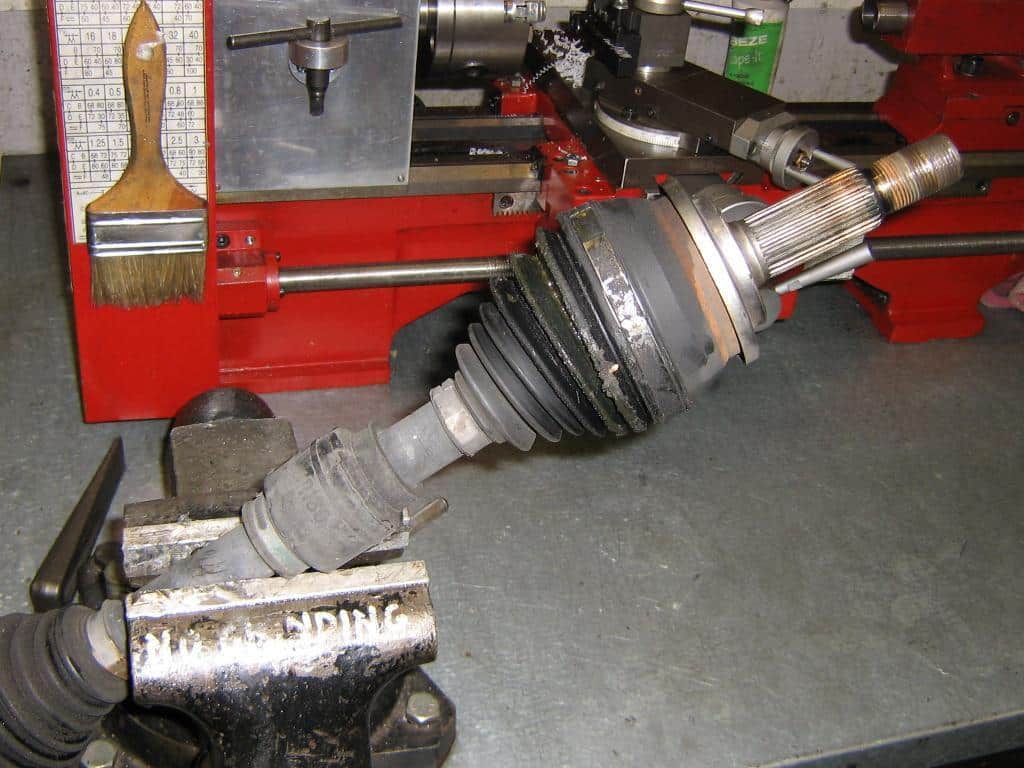
Hold the axle in a vice
Once the axle has been removed, we put it in a vice. This makes is a lot easier to work on the axle. If the axle is rolling around on the bench, it’s a lot harder to deal with the clamps and clips.
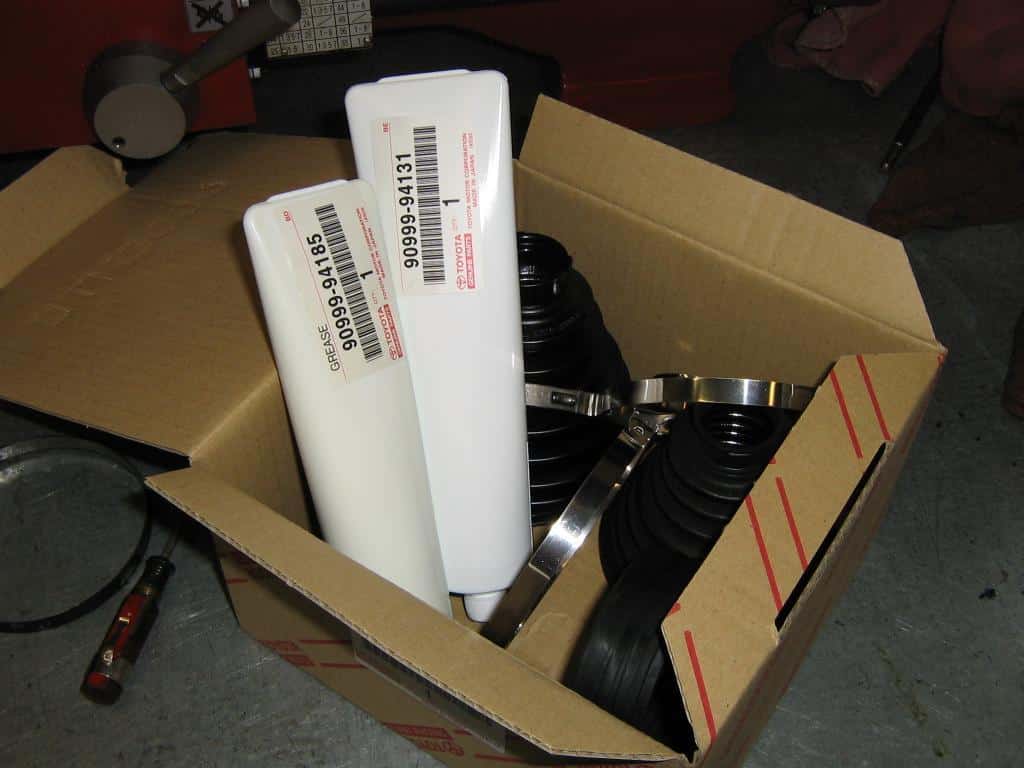
The best brand of CV boot
When possible, we like to use genuine CV boot kits. This kit from Toyota comes with all of the boots, grease, clamps, and clips necessary for the job. Notice that there are two tubes of grease, each with a different part number. Apparently, a Toyota engineer decided that the inner CV joint needed a different grease than the outer. You certainly won’t get two types of grease with an aftermarket CV boot kit. The clamps and boots are also top quality.

HOW DO YOU REMOVE THE OUTER CV JOINT?
Some axles have removable outer CV boots, but the Prius does not. To replace the outer CV boot, the inner joint and harmonic dampener must be removed, then the old boot can be removed, and the new boot can be installed by sliding it down from the opposite end of the shaft.
This is why Toyota doesn’t sell the outer boot alone. One other axles the outer CV boot will pop off with a sharp blow. A small snap-ring holds the race to the axle shaft and a blow to the inner race will push the CV joint past the circlip.
However, if you try that with this axle you’ll end up frustrated, with a broken axle, or most likely both.
There is no good way to tell the types apart by looking. You’ll need to check the service manual for the car you’re repairing to find out how it’s set up.

Remove the inner CV joint
The inner joint is indexed to the shaft with splines cut into both the shaft and the tripod joint. A circlip holds the joint in place.
Remove the circlip to remove the joint. Toyota provides a new circlip in the CV boot kit (and they should be replaced every time they’re removed).

The outer CV joint removed
The inner joint is indexed to the shaft with splines cut into both the shaft and the tripod joint. A circlip holds the joint in place.
Once the circlip is removed, the inner joint slides off, followed by the damper, then the outer boot.

Clean the CV joint
Once the boots are removed, we can start cleaning. I’m not a fan of using a solvent tank to clean the joint for two reasons. First, this can introduce dirt into the joint, and since the joint cannot be disassembled, there’s no guarantee any dirt introduced can be flushed out. Second, solvents used for tanks does not evaporate easily, so some will remain in the joint and dilute the grease. If the boot was mostly whole and there is no road grit in the joint, wiping the old grease off is the best option. If gritty, the best option is a flush with brake cleaner. Brake cleaner is clean, unlike solvent in a tank, and it evaporates quickly so dilution is not an issue.
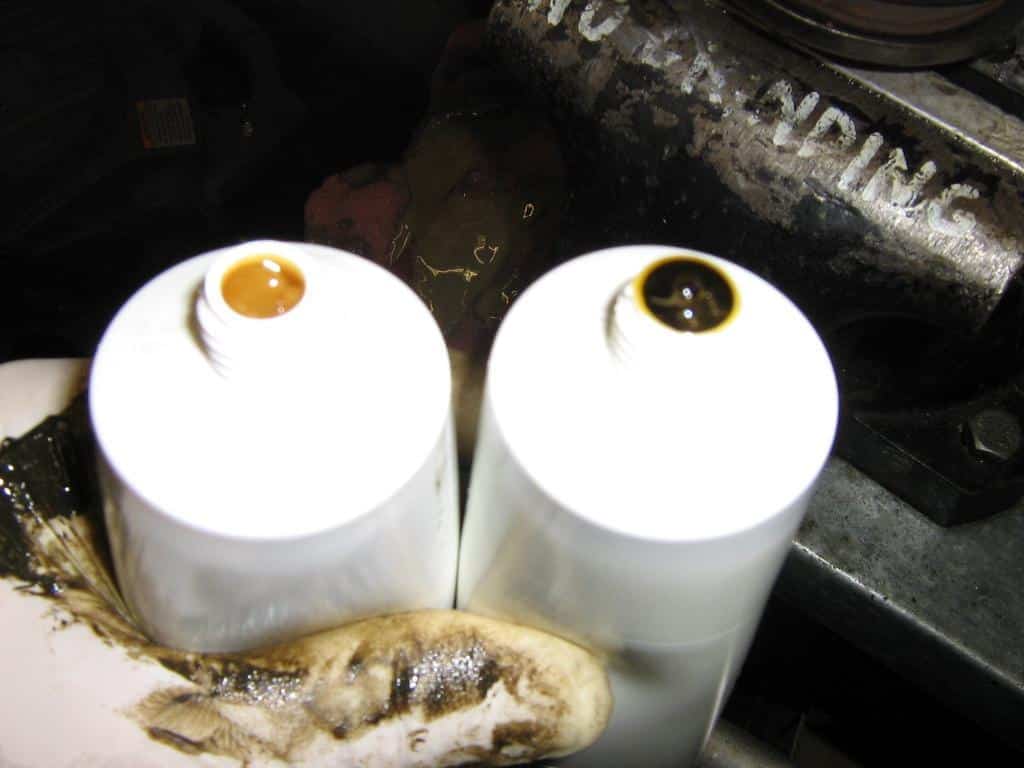
What kind of CV joint grease
Here’s something you won’t get with aftermarket CV boot kits: Toyota uses different types of grease for the inner and outer CV joints. Presumably the engineers had a reason for this, so we like to use the grease they specified. When we buy the kits from a Toyota dealer, all of the parts — the boots, clamps, clips, and even the grease the car had when it was new for a complete CV boot repair job.

How to pack a CV joint
The joint should be “packed” with grease, meaning the grease should be pushed deep into the joint, not just smeared on top. This is accomplished by “slapping” the grease into the joint by hand to push it past the ball bearings. It’s a very messy job. Once the joint is packed, the remaining grease is piled in a mount atop the joint.

CV joint boot clamp
For some CV boots we use a special tool to tighten the CV boot clamp and then cinch and stake it so it won’t move. This Toyota CV boot clamp is made to be the exact size necessary to clamp the boot securely. It requires a special set of pliers to install or remove.
You may have noticed that we use aluminum vice jaws. This is because we’re holding the axle on the splined surface and don’t want to damage it. No point in doing a CV boot repair only to damage the axle while doing it.
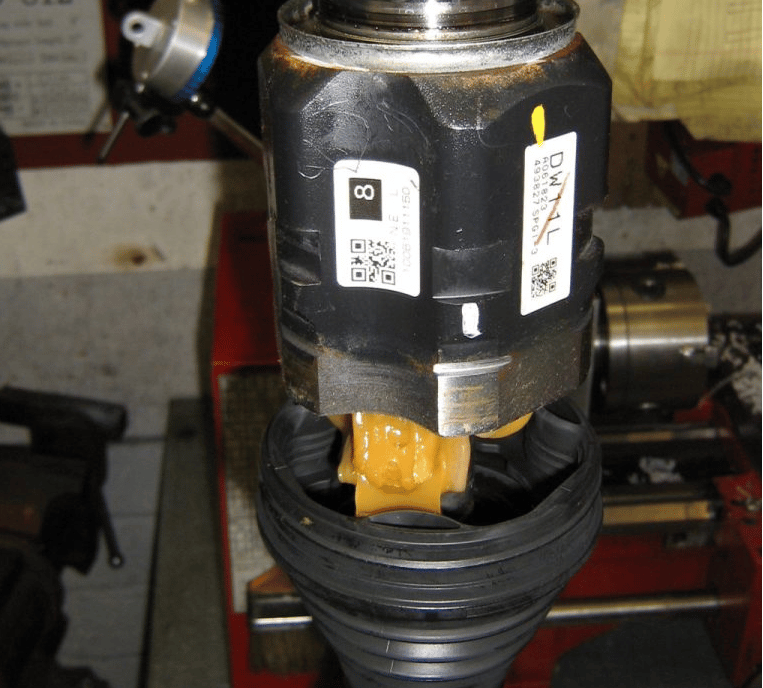
Almost done with the CV boot repair
The inner CV boot is positioned on the axle shaft first. Then the joint is packed with grease and pushed onto the inner tripod. Once the joint is in position, the boot is slid onto the joint and clamped in place.
Here’s the axle after the completed CV boot repair — ready for installation and years of continued service.
